HERITAGE STRUGGLE OP-ED
Remembering Cape Town’s forced removals – reliving a painful past on a quest for restorative justice
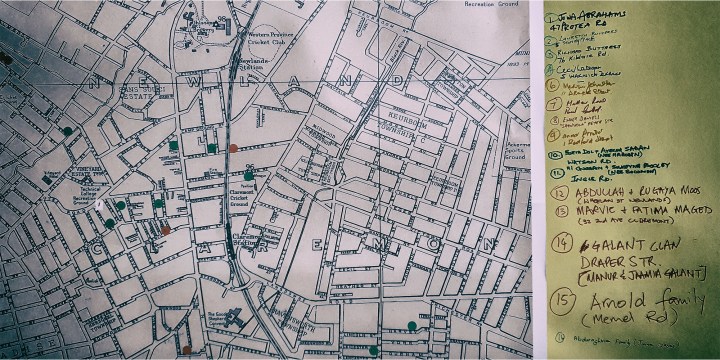
Under the apartheid Group Areas Act, entire communities were uprooted and removed from suburbs that had been declared ‘white’ areas. In Cape Town, today’s upmarket, gentrified suburbs of Newlands, Claremont and Harfield Village were among them.
Language broke, his speech faltered. Fred de Kock, or “Pa de Kock”, the community icon, tried to explain to us his anguish.
“I stand here today with a sore heart, because I was chased out of Harfield. When the first trucks came, we were praying and we were packing our stuff in the van.” Addressing the audience in the green blazer of the “Young Guiding Stars Sacred String Band”, he seemed caught between a painful past and a present, where his “hometown” is “not the same”.
“I’m standing here,” he said, “because I couldn’t say anything else, my heart is so sore…”
With Heritage Month been and gone, we are reminded of questions about what constitutes heritage and whose pain, history and heritage matter? Today, the gentrified cottages and coffee shops of Newlands and Harfield “Villages” are valued for their architectural, rather than social heritage.
Celebrating this “people’s heritage” would require a timely acknowledgement of the extensive race-based forced removals in the southern suburbs of Cape Town. Here, unlike areas such as District Six, the physical fabric of peoples’ homes remains, and ex-residents must continue to negotiate these spaces without justice or emotional closure.
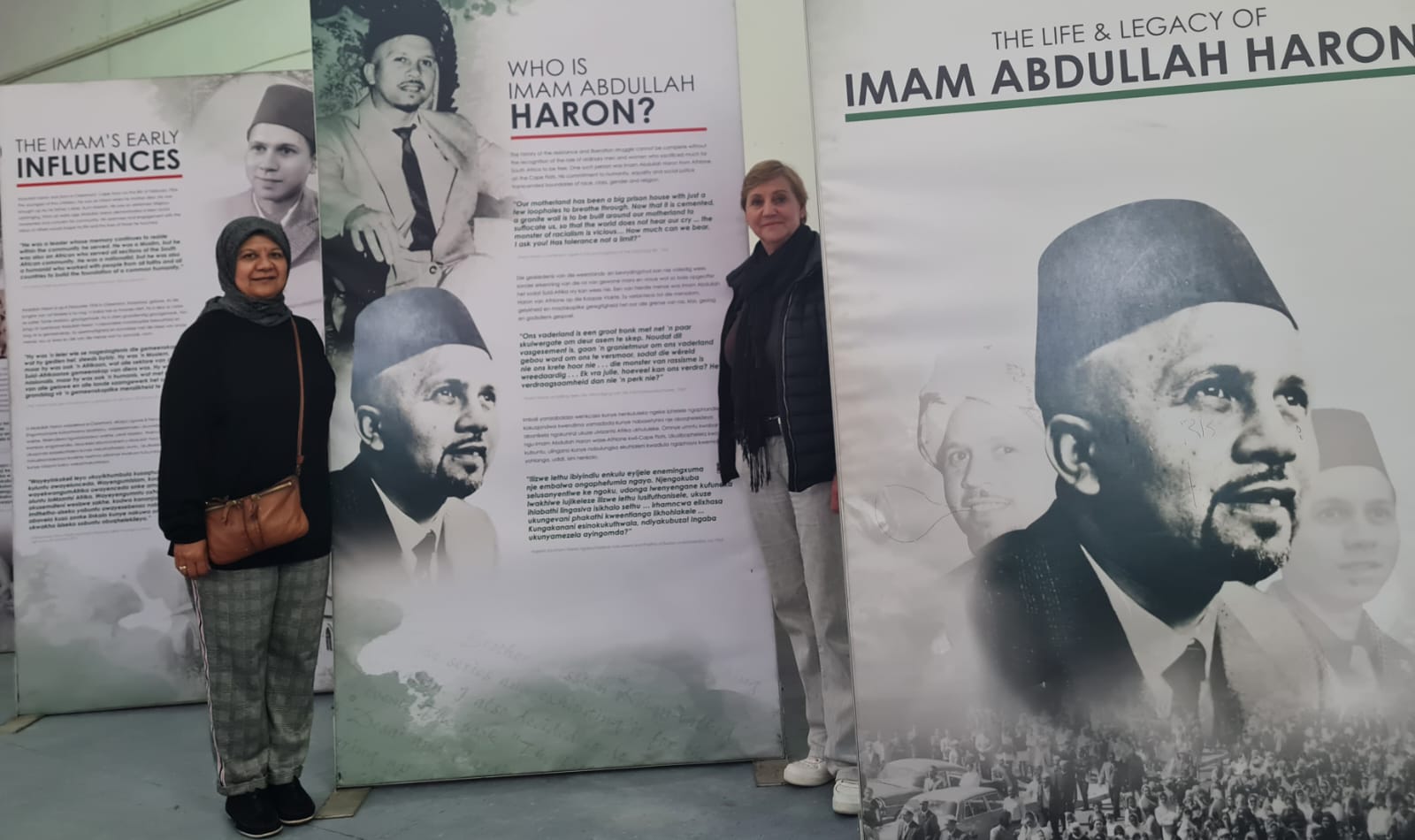
Fatima Haron-Masoet with Elmarie Raubenheimer of the Harfield Village Neighbourhood Watch on 24 September 2023. (Photo: Lauren Muller)
The convenient “forgetting” of this apartheid crime includes an erasure of these residents’ vital role in the development and stewardship of these very environments. Half a century later we are still left with questions of redress and the impact of this great loss, die groot verlies, and the subsequent tragedies that befell these communities.
On Monday, 25 September, the Newlands/Claremont Heritage, Environmental Justice and Restitution Society (NCHERS) located their Third Walk of Remembrance in Lower Claremont (Harfield Village). NCHERS is a recent interfaith initiative between the historic Claremont Main Road Mosque and St Saviour’s Anglican Church, Claremont.
Both these institutions were established in 1854 and will be celebrating 170 years in 2024. Since 2021, the organisation has sought to acknowledge and celebrate the close-knit and diverse communities forcibly removed from Claremont and Newlands.
In the face of racialised hardship and poverty, Lower Claremont was a space of rich sociality, bold activism and academic and sporting excellence. The Walk of Remembrance was to begin and end at Livingstone High School, an institution that played a key role during the darkest days of apartheid.
We must tell our stories, write our letters and posts to the future. Above all else we, all of us, must do things to make a difference.
Due to the wild weather and torrential rain that hit the Western Cape that weekend, the walk itself was cancelled, but an intrepid crowd gathered at the hall, among them many ex-residents of these areas. They had an opportunity to share memories, hear speeches and learn from historic documentary and photographic materials, including interactive maps.
Russell Dudley, NCHERS chairperson and son of legendary educator and activist RO Dudley, reminded the audience that NCHERS is pronounced “nurtures” – an organisation built upon the “loving relationships formed many years ago”.
The Dudleys are one of the oldest and most esteemed Newlands families. From the 1850s to the 1860s they owned property in Palmboom Road and Newlands Avenue, before being “removed” from both Newlands and York Road, Claremont.
NCHERS’ task, Dudley said, was therefore to “gather all the strands of our history together” in the radical remaking of community, or “re-membering”. For, he continued, “we must tell our stories, write our letters and posts to the future. Above all else we, all of us, must do things to make a difference.”
Read more in Daily Maverick: Heartache of forced removals lingers as claimants prepare to make ‘history’ and move back to District Six
A key theme of the day was the formative role of educational institutions in the area, and the vital role played by youth and teachers in the struggle for justice. Livingstone High School, soon to celebrate its centenary, is a fitting emblem of these values. Livingstone High will always be associated with radical icons of education in the Cape, including Dr Neville Alexander, RO Dudley, Ali Fataar, Kenny Jordaan, Les van der Heyden, Dennis Wessels and Victor Wessels.
The event included inputs from esteemed local sports coordinators and beloved educationists – including the remarkable Mr Van Graan (92), the former principal of Rosmead Primary. Van Graan reminded us that questions of justice and future activism must include the needs and voices of children.
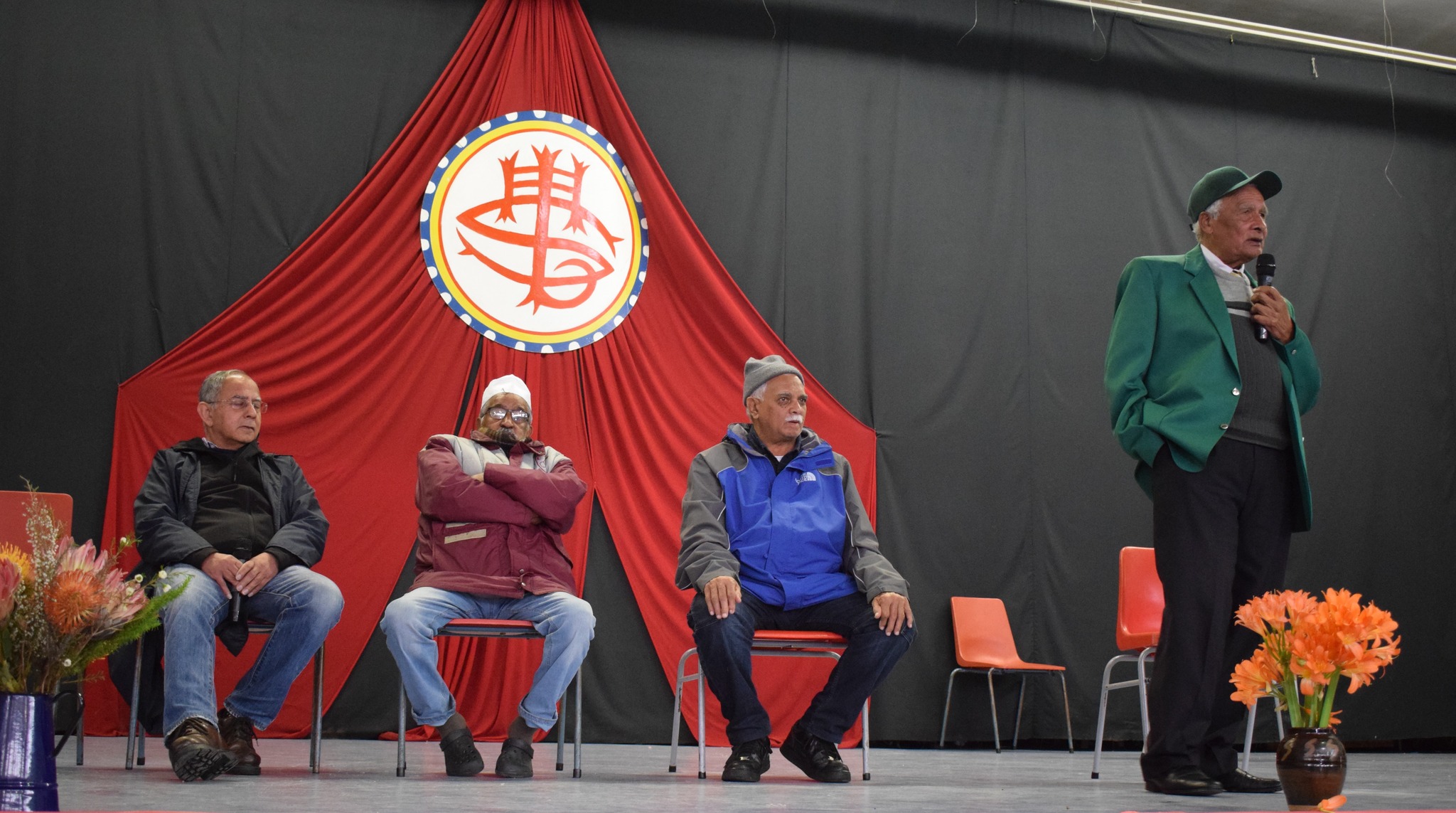
Fred de Kock speaking on 24 September 2023 (Photo: Lauren Muller)
NCHERS committee member Richard Buttress described the importance of Livingstone High as a beacon of the kind of education that brings about personal and social change. Buttress, who knows first-hand the profound impact of forced removals in Newlands, also read his poem Livingstone, the early sixties, which begins: “Powerful bastion of good teaching; Principled, defiant and unwavering; Your corridors heard the voices of liberty; For freedom and emancipation from tyranny”.
Radical political tradition
Another life and legacy celebrated on the day was that of local anti-apartheid activist and martyr Imam Abdullah Haron, of Claremont’s Stegman Road Al-Jamia Mosque. NCHERS deputy chairperson Fatima Haron-Masoet, the daughter of the late Imam, explained that the walks were to “serve as a reminder of the atrocities of the Group Areas Act”.
It was in this historical context, said Russell Dudley, that an education-based “radical political tradition grew up in the Cape”. Historian Crain Soudien, in his book The Cape Radicals (2019), has described the “intellectual innovation” that developed in these conditions of “extreme hardship” and “harsh and repressive political circumstances”. Indeed, from the 1930s, activists and intellectuals such as RO Dudley challenged basic notions of race, formulating and practising non-racialism and non-participation. This, Soudien asserts, was not just a rejection of the status quo, but a belief that “something new was possible”.
Lower Claremont or the “Vlak”, was an area that developed between the east side of the railway line and Lansdowne Road, now Imam Haron Road, and parts of lower Kenilworth. These streets, especially its “main road”, 2nd Avenue, were alive on festive holidays with music, parades and the participation of young people.
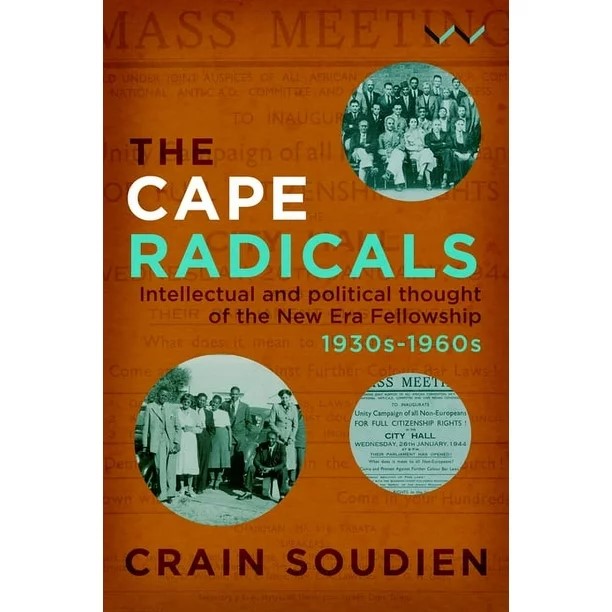
“Boeta” Salie Green explained that this road was “one of the most famous, famous streets in the whole of Cape Town, never mind District Six, this was the place to be. You came here, Friday, Sunday mornings, especially New Year’s Eve.”
Read more in Daily Maverick: Simon’s Town land claimants set to return 60 years after forced removal
It was from here that between the 1960s and 1970s more than 19,000 people of colour were evicted. The first to be expelled under the Group Areas Act were black Africans, whose stories of removal are seldom told. Most families, however, were moved from Claremont to the Cape Flats.
Almost 50 years after these iniquitous events, there has been no meaningful compensation and memorialisation. NCHERS’s Salegga Mustapha says that “we are scattered into many different suburbs and lost communication with many neighbours, school friends and family”.
Former property owners in Claremont tell of how they received a pittance for the forced sale of their houses. These injustices, we were reminded by journalist Zubeida Jaffer, are an echo of 17th-century colonial land dispossession in the area, and its “thievery of the highest order”.
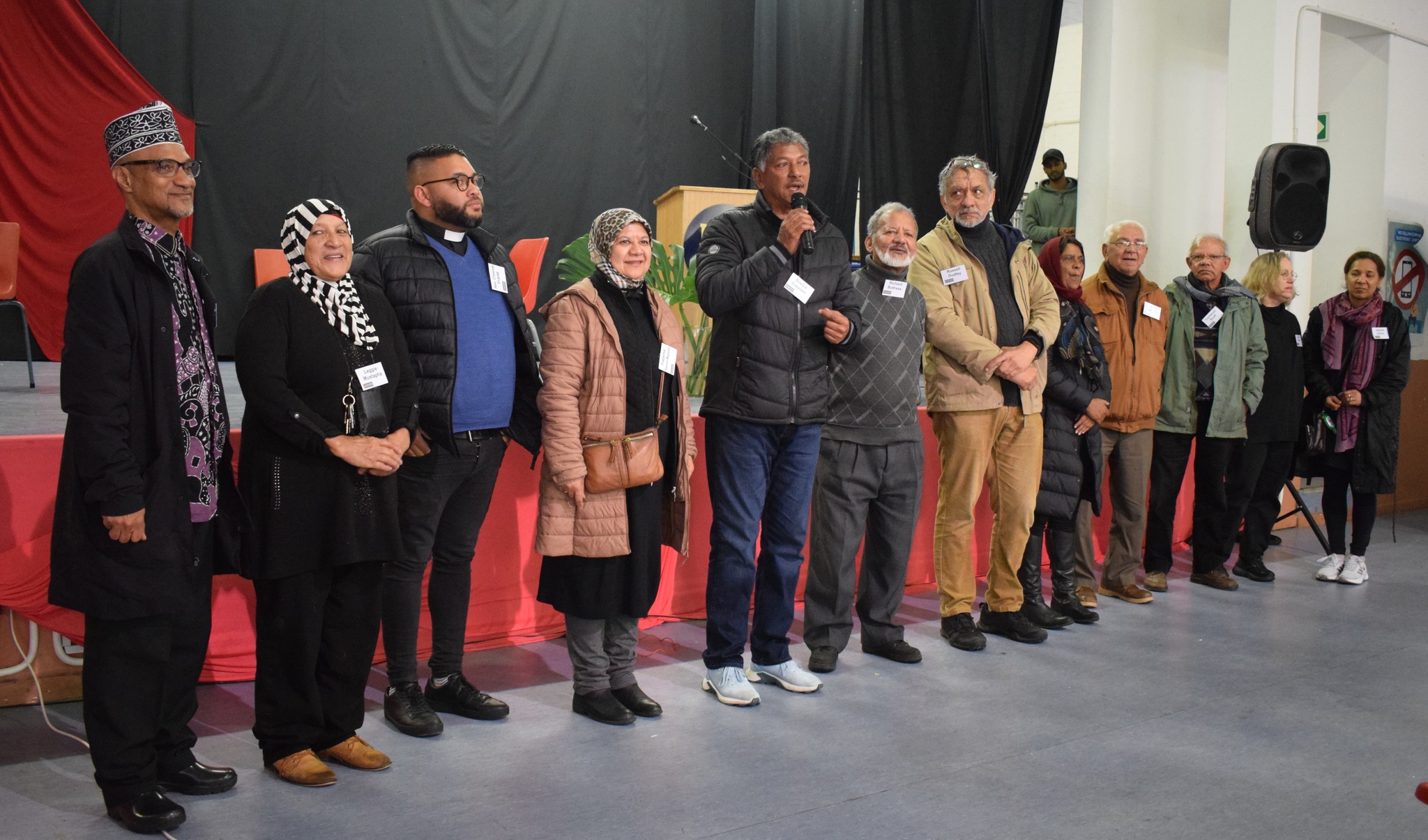
NCHERS steering committee members on Heritage Day, 24 September 2023. (Photo: Lauren Muller)
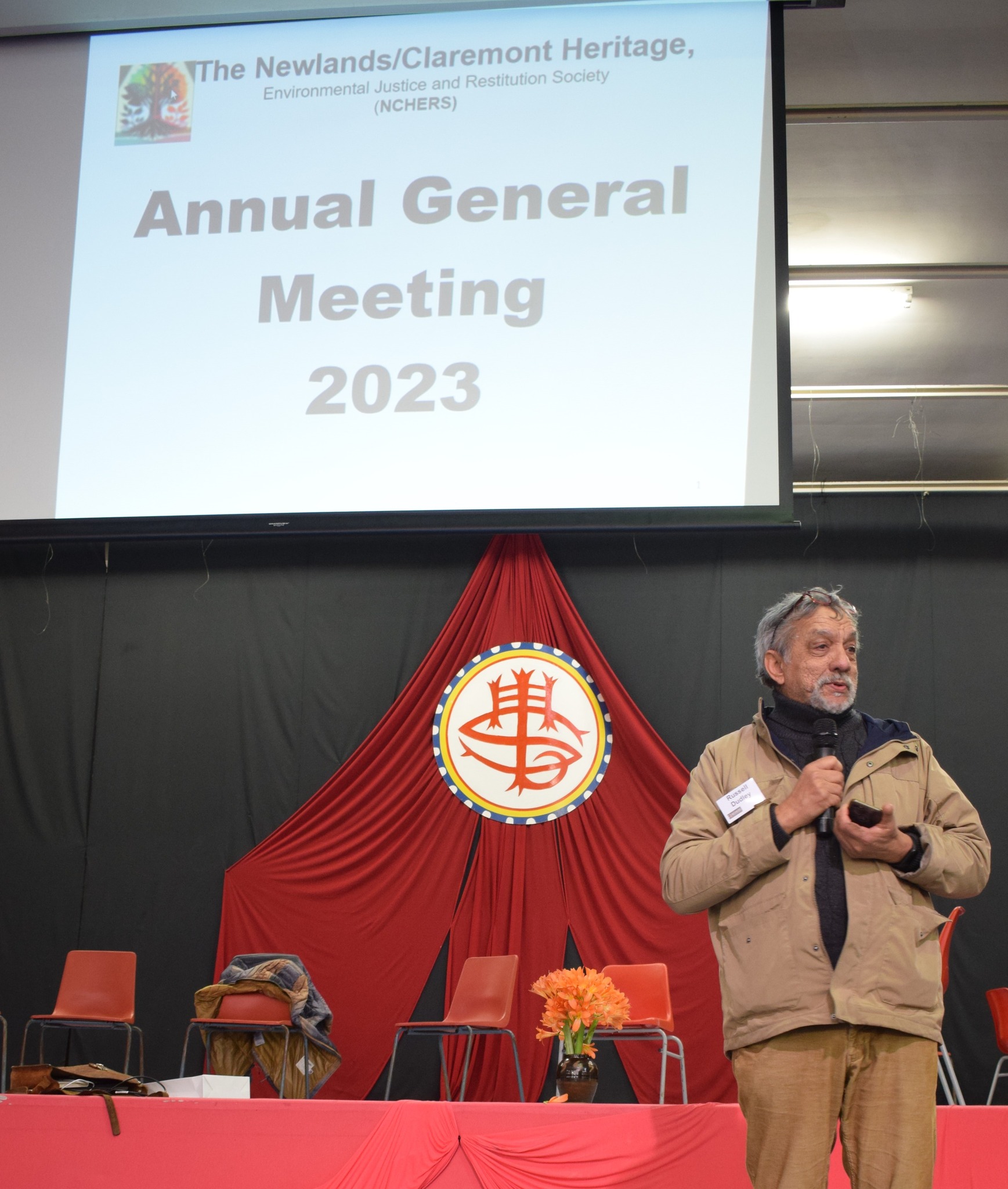
Russell Dudley on Heritage Day, 24 September 2023 (Photo: Lauren Muller)
It is a statement of the bravery and resilience of people of this displaced community that so many still managed to build a life for themselves, thanks in part to local community organisations and institutions. These include educational institutions like Livingstone High School, Clareinch Primary, Rosmead Primary School and the Jane Bourhill Institute, and places of worship such as the Harvey Road Mosque, St Mathew’s Anglican Church and the Kenilworth Methodist Church.
These lives and stories need to be heard and recorded, because, as Russell Dudley said, “if we don’t write the history, nobody else will”. This point was hammered home by advocate Enver Daniels who shared his “surreal experience” of visiting his original home in Meyer Street, Claremont. The history of this street and area, he said, is still only “in my head”, including place names severed from their original owners or meanings.
Daniels spoke of the slippages and silences of this encounter – despite the civility of the present homeowners, “they had been living there for a long time, but they made no effort to ask, to explain how they felt living in a house which they knew the owners had been thrown out of”.
Remembrance is not simply a nostalgic exercise, but an ongoing battle for public awareness, social recognition and material and symbolic restitution.
While the chairperson of the Harfield Village Association (HVA), James Fernie, welcomed NCHERS and the event participants “back to your home, your neighbourhood”, it is yet unclear what such statements mean, or whether such a place still exists.
The ex-residents who spoke reminded us of the observation by Professor Siona O’Connell of the University of Pretoria that the “moment of eviction is not bound by temporality. That specific moment of anger, shame, injury and torment is relived time and again.” This quote is found in her book on Lower Claremont, Impossible Return (2019), which includes the haunting and poignant photographs of David Brown (1951-2016).
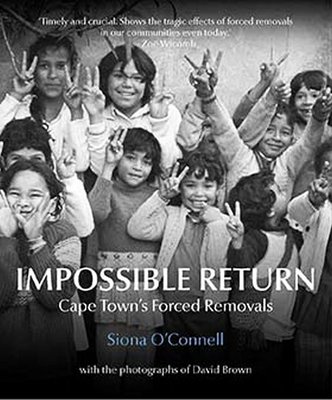
O’Connell’s book-based documentary film was shown at the event, and contributed to an ongoing discussion about what healing and restorative justice means for such families and their descendants. The 90-year-old Fred de Kock, driven to tears by his home that was “not the same”, and his and others’ resolve to continue the “Young Guiding Stars Sacred String Band”, is a point of sorrow and celebration. It is also a potential revocation of O’Connell’s provocation of “impossible return”. One-hundred-and-fifty years ago, in 1873, the devastating process and effect of ongoing colonial dispossession was plaintively expressed by Dia!kwain in “The broken string”:
die gebreekte snaar*
dit was ander mense
hulle wat die snaar vir my gebreek het
daarom
het die plek vir my so geword
dit is die rede
waarom die plek vir my nie meer ‘n plek is nie
omdat die snaar vir my gebreek is
omdat die snaar nie meer die lug sing nie
daarom
voel die plek nie meer vir my soos my plek nie
daarom
voel die plek asof dit voor my oop staan
oop staan en leeg is
want die snaar is gebreek vir my
die plek voel vir my vreemd
daarom
(Translation and interpretation by Antjie Krog (2002). Original in http://lloydbleekcollection.cs.uct.ac.za/).
NCHERS is aware that remembrance is not simply a nostalgic exercise, but an ongoing battle for public awareness, social recognition and material and symbolic restitution. It recognises that the damages, losses and pain of dispossession, racialisation and forced removals are profound and intergenerational.
Going forward, NCHERS, as a publicly constituted heritage organisation, will be undertaking participatory projects of history-making, memorialisation and restorative justice in Newlands and Claremont.
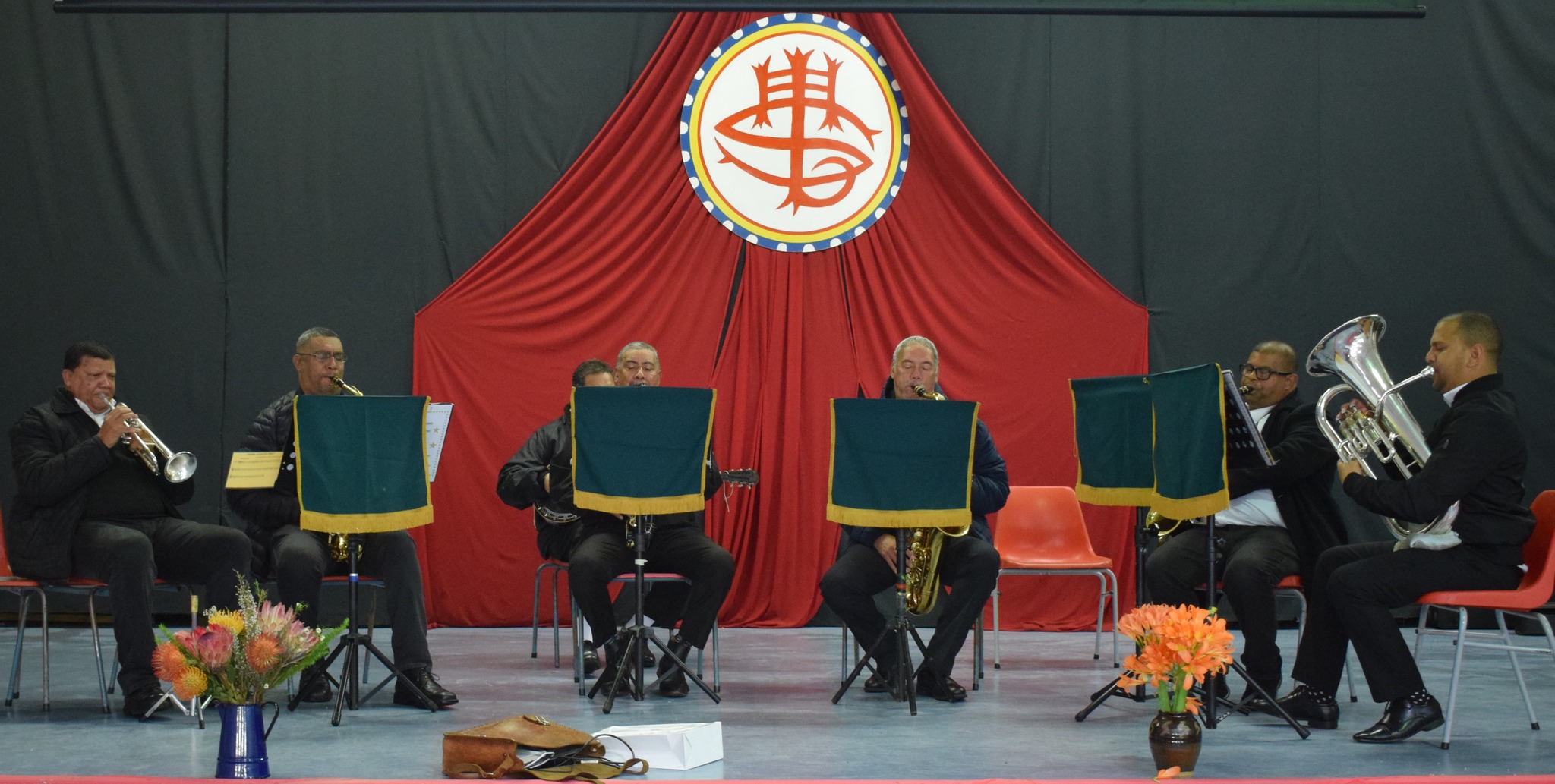
The Young Guiding Stars Sacred String Band. (Photo: Lauren Muller)
Fatima Haron-Masoet explains that these painful memories can also “be a weapon against denial and erasure of this past and its injustices. The persistence in our struggle continues to remind South African society that we shall never forget.” DM
Written by Lauren Muller who lives in Newlands and is doing a doctorate in history at the University of the Western Cape, in collaboration with other members of the NCHERS steering committee. For more information see https://nchers.org.


















 Become an Insider
Become an Insider
Looking at the attached map , I see a site on the corner of Mains road and Kildare avenue (the one nearest the river flowing through) which reminds me of the premises/location of the Gandhi Memorial vernacular school, which I attended from 1957 to 1963 as a primary school pupil. It was built/founded in early 1952 and ‘removed’ by the group areas act in 1967. I have vivid memories of straddling the dilapidated fence on the river end of the premises (against warnings by teachers not to!) to explore the plant growth alongside the river edge… and clambering back up the embankment. Today … half of what was our ‘home’ (to some 120+ families) the premises is a public car parking space .